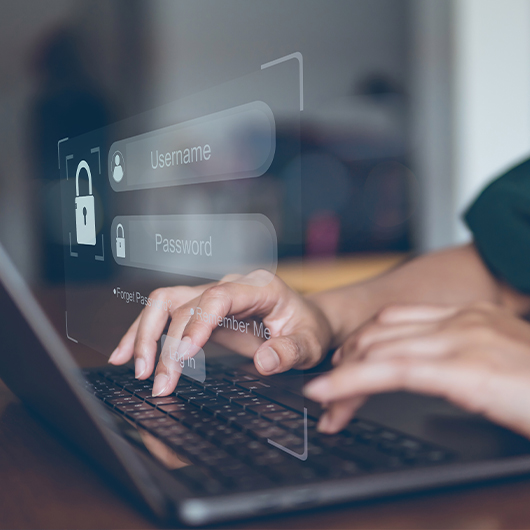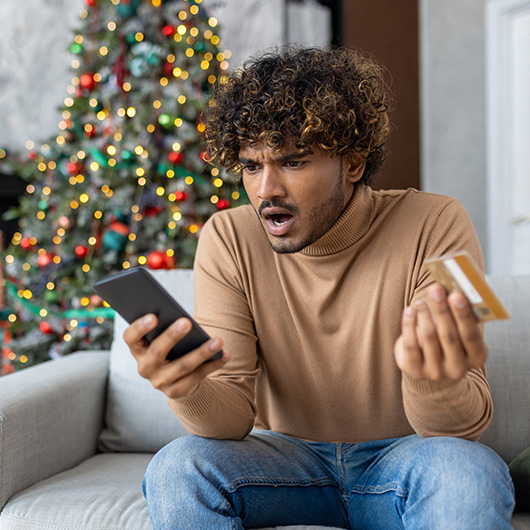How to Keep Your Card Account Safe
How to Keep Your Card Account Safe
If you love the convenience of your debit or credit card but worry it may be vulnerable to fraud, take heart: You can put measures into place right now to help protect your card account from financial losses, identity theft, credit score damage and other consequences that may result from unauthorized use. Take a few moments to read and incorporate the following tips for safeguarding your account, and then recheck your security settings periodically to ensure you’re doing all you can to prevent credit or debit card abuse.
Leverage the power of security features
Financial institutions recognize that having your credit or debit card account compromised through the theft of your physical card or your online account information can be a serious matter. Once a thief has your information, they can make purchases and withdrawals, use your personal information to open accounts and take out loans, and assume your identity to commit any number of crimes.
In response to these risks, many card issuers offer security features and controls to safeguard cardholders’ accounts. Putting these safeguards into place may be as easy as opting in or taking just a few moments to set your preferences.
It’s wise to compare security features before applying for a debit or credit card, because different financial institutions may offer different features. Dollar Bank’s My Cards tool serves as a good example of the range of security controls you should expect from your card issuer. In short, My Cards, which is available through Dollar Bank’s mobile app or Online Banking, enables cardholders to protect their accounts in the following ways:
Turn your card off and then back on — instantly. If you’ve ever misplaced your credit or debit card, you may have debated whether to call the card issuer immediately to disable your card or wait to see if it shows up. This My Cards security feature empowers you to shut your card down instantly and easily so that no one can use it while it’s not in your possession. You can turn it back on just as easily once you’ve found your card.
Set controls and alerts. This feature enables you to set rules for where, when and how your card account may be used. You might limit the geographical range of transactions, for example, or restrict card usage to certain types of merchants. Or you may block certain types of transactions, such as ATM withdrawals, to reduce the risk of fraud.
If someone tries to use your card in a manner or location you haven’t authorized, the transaction will be declined. For additional peace of mind, you can set your preferences so that you receive a real-time text or email notification whenever there is any activity on your card account.
Set up secure mobile and online payments. For fast, secure payments on the go, My Cards enables you to easily integrate your credit or debit card into your digital wallet in minutes (Google PayTM, Apple Pay® or Samsung Pay). For online shopping, you can access a digital version of your card from Dollar Bank’s mobile app or Online Banking.
In addition to the card control services offered by your financial institution, check to see if your debit and credit cards offer any additional financial protection resources. For example, Dollar Bank debit and credit cards come with free Mastercard® ID Theft Protection™, which includes 24/7 identity theft resolution services, credit identity monitoring, suspicious activity alerts and more.* For more information, visit mastercardus.idprotectiononline.com.
Cover the basics
In addition to leveraging the latest security features, remember the basics of protecting your card account: Choose a strong password and personal identification number (PIN), enable multifactor authentication (MFA), sign the back of your card and share your account information safely.
Choose a strong password and PIN. Password requirements may vary among card issuers, so be sure to follow their recommendations while also keeping in mind new guidelines issued by the National Institute of Standards and Technology (NIST) in 2024. Notably, NIST emphasized the importance of password length over complexity: Passwords should now be a minimum of 15 characters and don’t necessarily require a certain mix of character types to be strong. It may take time for password standards to evolve across card issuers and, indeed, some may not subscribe to NIST guidelines, so set a password that complies with their standards while incorporating the new 15-character minimum, if possible.
Use a password that is unique (not one you’ve used for another account) and unguessable (steer clear of including any personal information, such as your birthday or address). Avoid repeating or using sequential letters or numbers, too. Follow these same guidelines when setting your PIN and make it as many digits as allowed. If remembering your password or PIN becomes cumbersome due to length or the number of passwords and PINs you have, consider using a secure password manager.
Enable MFA. Multifactor authentication puts an additional layer of protection between an unauthorized user and your account by requiring the user to provide two forms of identification for successful login. Commonly, MFA takes shape as a one-time passcode that is sent to your phone after you provide your username and password. You gain access to your account only after entering that code.
Sign the back of your card. Signing your card may seem like an obsolete security measure. Once the industry standard for securing a transaction, the signature check — comparing the signature on your card with the one you provide at point of sale — has largely been replaced by electronic transaction verification. However, individual merchants still have the option of requiring signatures, and some card issuers deem unsigned cards to be invalid, so to be on the safe side, sign your card.
Share your account information safely. You should share your card number, expiration date and security code (card verification value, or CVV) only with merchants you know to be legitimate and secure (look for “https” at the beginning of the URL, often preceded by a lock icon). Don’t email or text any information related to your account, and follow specified security protocols when enrolling in a person-to-person payment application.
Monitor your card account
In addition to setting up alerts and following the basic security protocols outlined above, monitor your credit or debit card account closely, with regular check-ins to ensure no unauthorized activity has taken place. Be sure to take advantage of fraud text alerts if offered by your financial institution. As card security goes, a strong offense is your best defense.
*This benefit is provided by Generali Global Assistance Inc. Certain terms, conditions and exclusions apply. Please see your Guide to Benefits for details or call 1-800-MASTERCARD. Mastercard is a registered trademark, and Mastercard ID Theft Protection is a trademark of Mastercard International Incorporated.
Google Pay™ is a trademark of Google Inc.
Apple Pay® is a registered trademark of Apple, Inc.
Samsung Pay is a registered trademark of Samsung Electronics Co., Ltd.
Message and data rates from your carrier may apply to Dollar Bank Mobile Banking including Google Pay, Apple Pay and Samsung Pay services.
This article is for general information purposes only and is not intended to provide legal, tax, accounting or financial advice. Any reliance on the information herein is solely and exclusively at your own risk and you are urged to do your own independent research. To the extent information herein references an outside resource or Internet site, Dollar Bank is not responsible for information, products or services obtained from outside sources and Dollar Bank will not be liable for any damages that may result from your access to outside resources. As always, please consult your own counsel, accountant, or other advisor regarding your specific situation.
Posted: April 16, 2025




